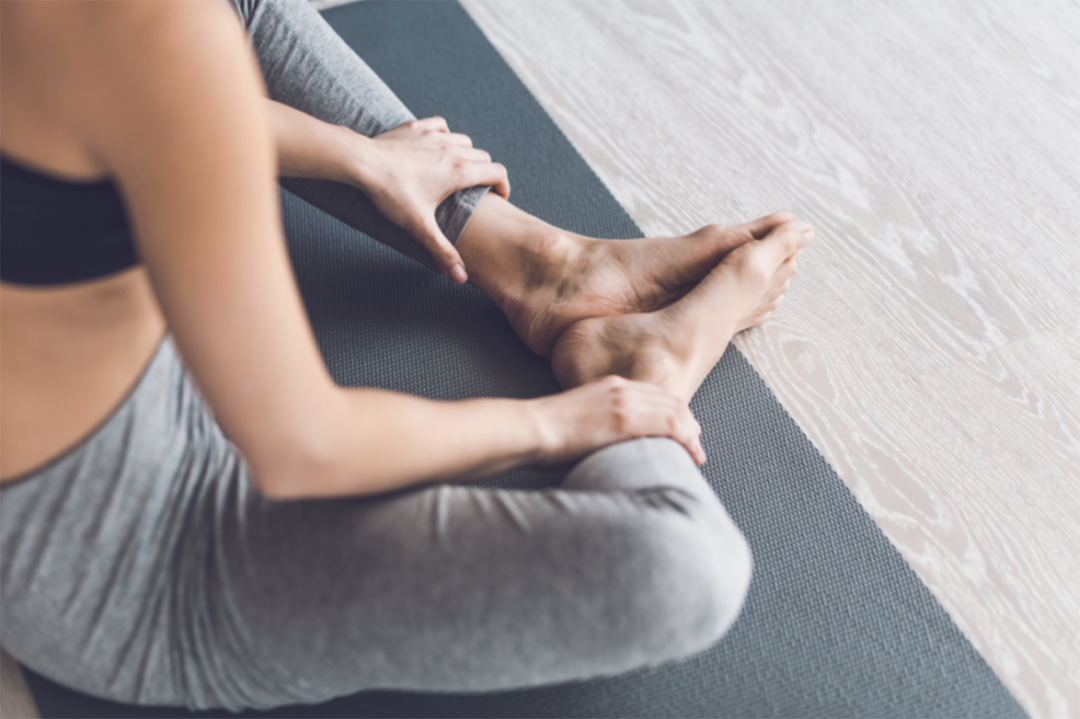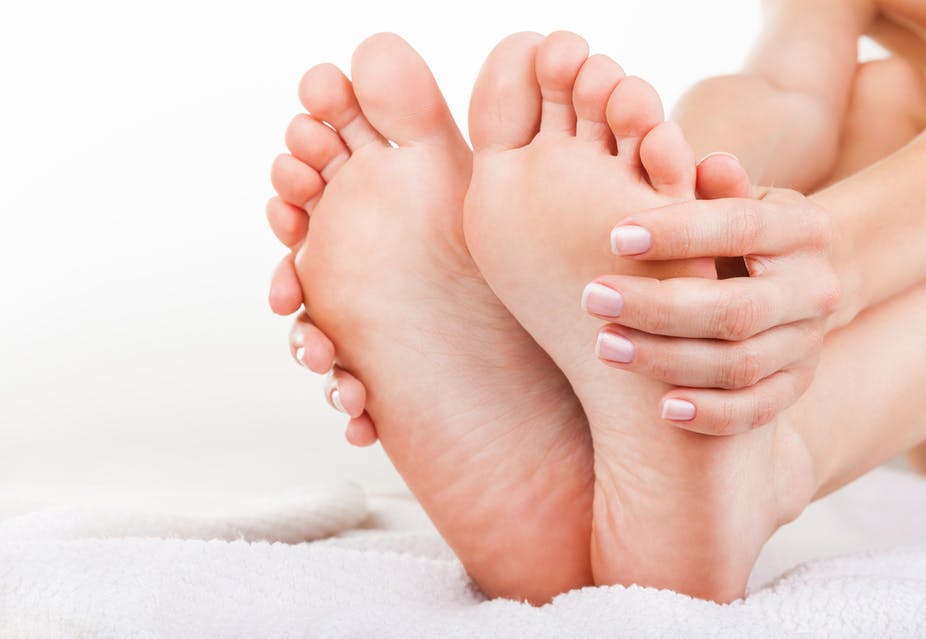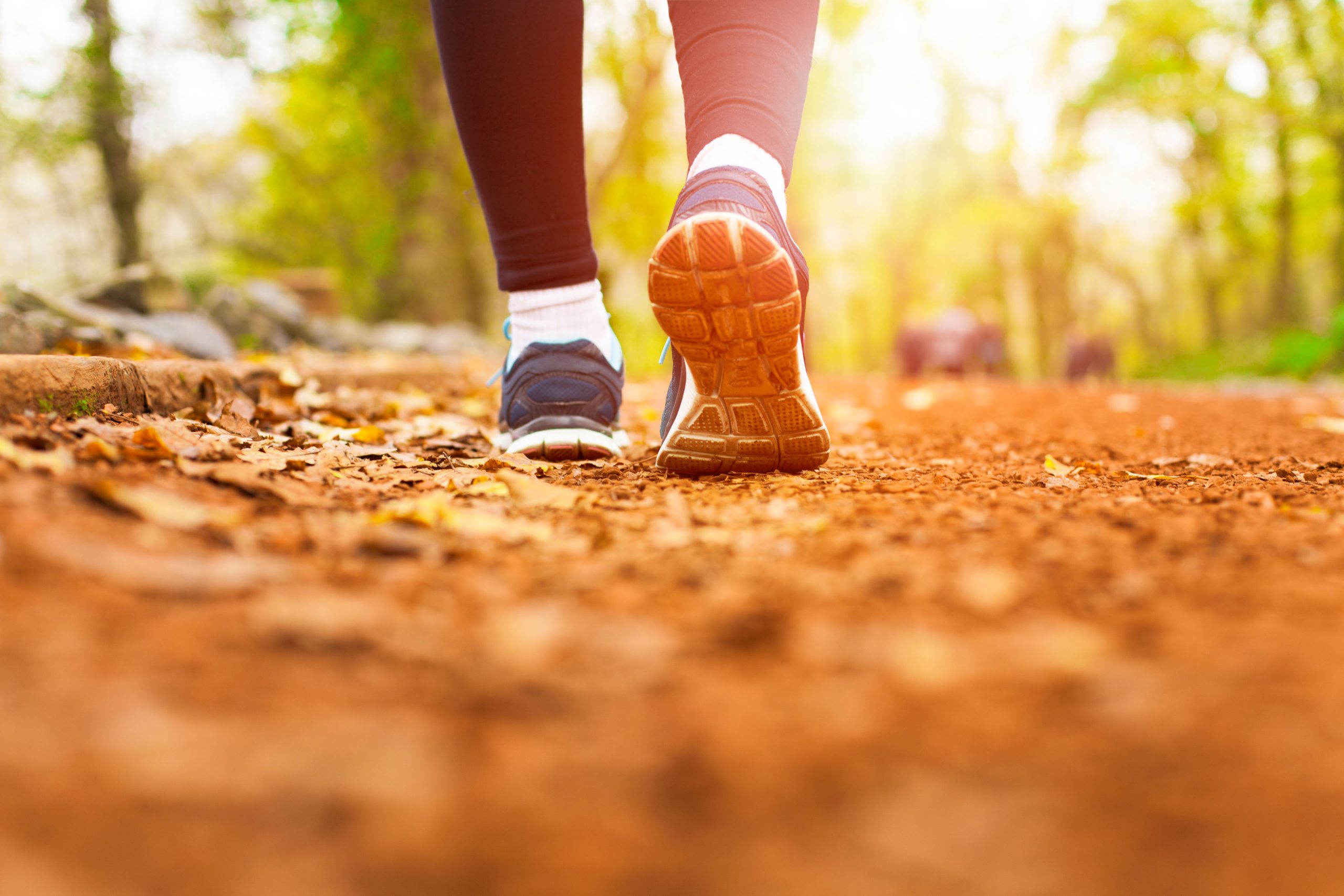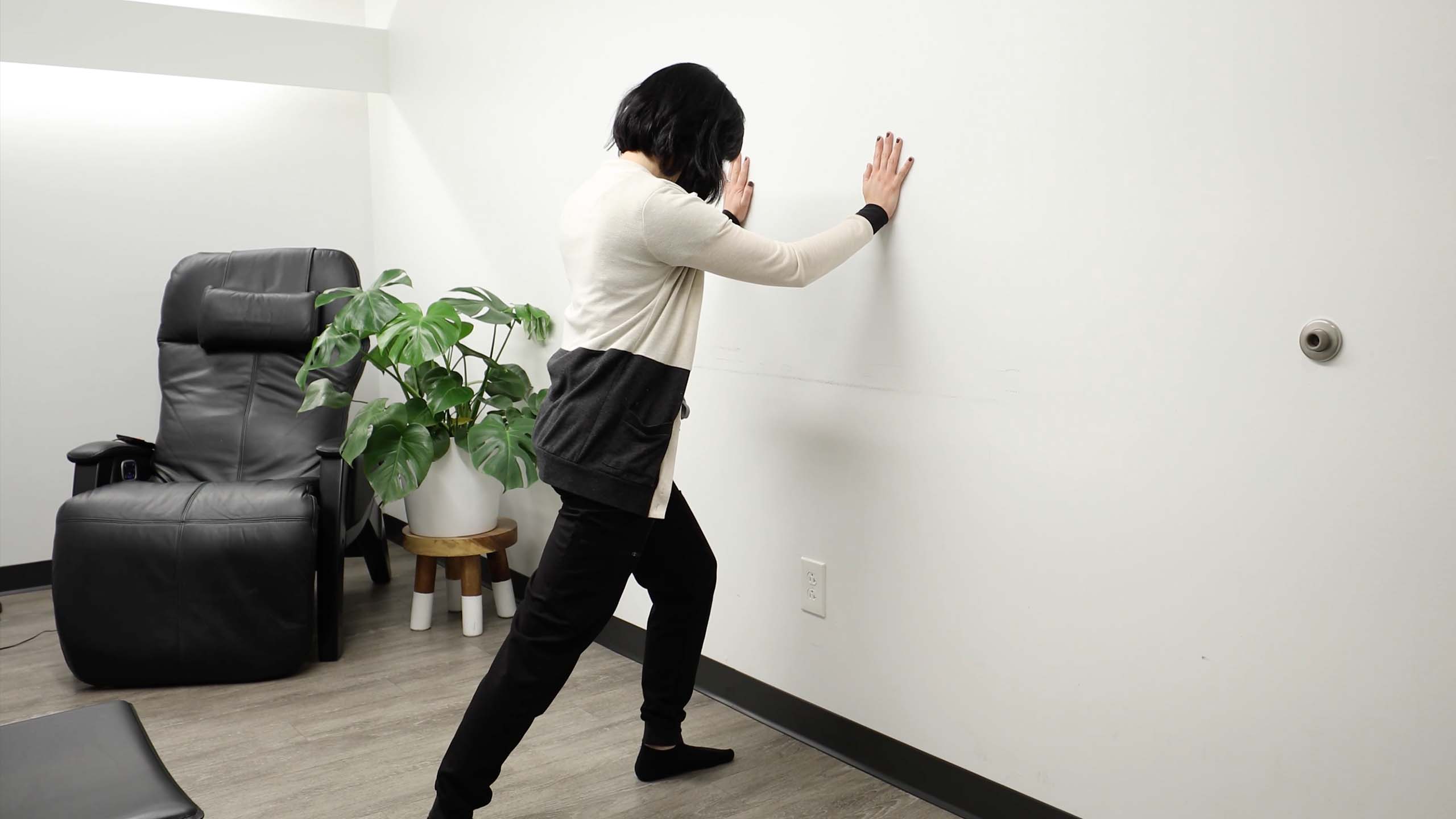How you can manage everyday foot pain
How you can manage everyday foot pain
It’s one thing to have sore feet after an unusually long day of standing, walking around, or exercising more than you’re used to doing. But if low-grade foot pain and discomfort is something you experience regularly, you shouldn’t accept this as a normal part of daily life.
Being on your feet is something many of us can’t avoid. At Balance Foot & Ankle, we often hear from patients who spend long hours on their feet working in a service industry, parents running around with their children, and athletes engaging in physical activity. While every situation is unique, we find that this type of general foot pain can be significantly relieved by some simple, non-operative interventions.
Finding the right shoe for you
If you’re like a lot of people, you probably tend to shop at a large retail store or website and select a pair of shoes based on looks and price. Unfortunately, many shoes you’ll find at these retailers are either low quality or aren’t a good fit for your feet, which can cost you in the long run. While many everyday shoes appear similar, there are some key differences between each pair. There are considerations like arch support, stability, cushion, width, heel to toe drop and more that determine if a pair of shoes is right for your feet.
For example, if you have flat feet, you might benefit from a shoe with built in arch support. In some cases, you might benefit from added support through an orthotic. But the key takeaway here is that everyone’s feet are unique and it’s worth finding the type of shoes that works best for you.
Fortunately, it’s not complicated to do this. By visiting a local retailer, such as our friends at Second Sole or Arthur’s Shoe Tree, you can work with staff to measure your feet, analyze your gate, and identify any particular needs that can be addressed.
How Balance can help
In some cases, if pain persists beyond home remedies and shoe gear changes, it may be time to seek professional advice. Our board certified foot and ankle physicians and surgeons are available to take the time to better understand the underlying causes of your foot or ankle discomfort. A comprehensive exam that may include X-ray or other imaging modalities may be necessary in order to devise a treatment plan that is right for you.
Ultimately, lingering foot and ankle pain is not normal and shouldn’t be brushed off. We’re here to help – don’t hesitate to reach out and schedule an appointment today.
Let us restore your balance.
If you notice the discomfort in your heels persisting, our trusted team of podiatrists at Balance Foot & Ankle can work with you to alleviate the pain by customizing a treatment plan to your lifestyle.
Stabilize Your Step: Yoga for Foot & Ankle Strength
Stabilize Your Step: Yoga for Foot & Ankle Strength
Yoga is a practice that has been used for centuries to improve flexibility, mental clarity, and overall awareness of the body. In the field of podiatry, we often recommend yoga stretches to help improve the strength and stability of our feet and ankles. Our feet are the foundation of our body, support our weight throughout the day, and provide balance and stability. However, due to inactivity, improper footwear, or injuries, our feet and ankles may become weak, leading to pain, discomfort, and instability.
We’ve outlined a few simple poses you can practice to enhance your stability, and hopefully, help you relax and restore.
The Balanced Solution
Mountain Pose
Mountain pose is excellent for improving posture and grounding the body. It helps to strengthen the feet, ankles, and legs while improving balance and stability:
- Stand straight with your feet hip-width apart
- Keep your weight evenly distributed on both feet
- Engage your leg muscles and lift your kneecaps
- Lengthen your spine and keep your shoulders relaxed
- Hold for 30 seconds to one minute
Warrior III
Warrior III is a powerful pose that strengthens the legs, hips, and ankles:
- Stand straight with your feet hip-width apart
- Shift your weight to your left foot and lift your right leg off the ground
- Extend your right leg behind you while keeping your hips square
- Reach your arms forward and keep them parallel to the ground
- Hold for 30 seconds to one minute and repeat on the other side
Tree Pose
Tree pose is an excellent pose for improving stability. It strengthens the feet, ankles, and legs while improving focus and concentration:
- Stand straight with your feet hip-width apart
- Place your right foot on your left inner thigh
- Press your foot into your thigh and your thigh into your foot
- Bring your hands to your heart center or raise them above your head
- Hold for 30 seconds to one minute and repeat on the other side
Half Moon Pose
Half Moon pose is a pose that helps to stretch the vertebral column while engaging the ankles and legs:
- Stand straight with your feet hip-width apart
- Shift your weight to your left foot and place your left hand on the ground
- Lift your right leg off the ground and extend it behind you
- Rotate your right hip open and stack your right foot on top of your left foot
- Raise your right arm toward the sky
- Hold for 30 seconds to one minute and repeat on the other side
Downward-Facing Dog
Downward-facing dog is a pose that strengthens the feet, ankles, and wrists while improving flexibility and balance:
- Start on your hands and knees with your hands shoulder-width apart and your knees hip-width apart
- Lift your hips up and back, straightening your arms and legs
- Press your hands and feet into the ground
- Hold for 30 seconds to one minute
Practicing and incorporating these poses into your regular exercise routine can help prevent injuries, alleviate pain and discomfort, and enhance overall well-being. Remember to practice these poses mindfully and with compassion, listening to your body’s limitations and adjusting accordingly. If you need extra help restoring your balance or stabilizing your step, we’re here for you. Don’t hesitate to give us a call or schedule an appointment today at any of our five locations.
Mending Dry Skin: Tips & Tricks
Mending Dry Skin: Tips & Tricks
Mending Dry Skin this Winter
We all deal with dry skin from time to time, especially during these chilly winter months, and while it’s a common ailment it’s also one that can cause discomfort. Often times we overlook dryness in the feet, but we owe it to ourselves to understand the cause and take measures to remedy & prevent it.
Causes for Dry Skin
Rough, cracked, and flaky skin on the feet can cause irritation and tenderness but why does this occur? Certain medical conditions like eczema and athlete’s foot can cause dryness and should be remedied using specialized prescribed or over-the-counter lotions. Cold weather, aging, and poor self-care like improper cleaning or footwear can also be common causes of dry skin. While dryness can be a nuisance, we recommend a few simple steps to repair the skin and minimize dryness from reoccurring.
The Balanced Solution
- Indulge in a foot soak: Need a self-care night? Using a foot soak with warm water and Epsom salt is not only a great way to unwind, but to soften rough skin as well. Once your skin is softened, use a pumice or foot scrub to gently remove dead skin cells from the soles of your feet. Make sure to heal any cuts or cracks before attempting to exfoliate.
- Moisturize: Once you’ve exfoliated, massage a rich, preferably oil-based moisturizer into your feet. Try applying foot lotion or cream before bed and wear a cozy pair of socks to lock in moisture and ensure that your feet stay soft and smooth.
- Protect your feet: Your feet need to breathe! When overworn, constricting footwear can quickly lead to dryness. Try to wear comfortable shoes that are made of breathable materials like leather, mesh, or canvas.
- Stay hydrated: If we’re dehydrated, chances are our skin is too! Be sure to drink plenty of water throughout the day to ensure proper hydration in the skin and to prevent chronic dryness in the future.
Once you’ve taken steps to heal your feet, be sure to routinely care for them to prevent dryness from returning. Some preventative measures include wearing socks regularly to protect your feet, avoiding hot water that can strip your skin of natural oils, and using foot care products. If you’re unsure where to find quality foot care products, take a look at some of the premium products that we have to offer in our shop.
It may take some consistency and effort, but following these steps will help get your feet feeling and looking their best. If dry or cracked skin becomes a repeated issue, even after self-care and prevention, don’t hesitate to give us a call or schedule an appointment.
Ankle Care Tips for the Fall Sports Season
Ankle Care Tips for the Fall Sports Season
One of the best parts of this time of year for many students is the return of fall sports. Whether it’s playing football under the Friday night lights, racing on the cross-country course, or taking the field for a soccer match, there’s no shortage of opportunities for competition, self-improvement, and team bonding.
Student-athletes know as well as anyone how important staying healthy is for making the most of their participation in fall sports. In order to stay healthy and on the field this fall and beyond, let’s take a look at some of the best ways to keep your ankles strong.
Ankle sprains
Sprains are among the most common injury that sidelines student-athletes. A 2020 study found that ankle sprains account for up to 40 percent of all sports-related injuries and is the most frequent lower-limb injury.
An ankle sprain occurs when you land awkwardly or take contact to the ankle, causing a roll or twist that leads to a tear or stretch of the ankle-supporting ligaments (beyond its normal range of motion). Pain, tenderness, bruising, and a limited range of motion are the top symptoms associated with an ankle sprain.
When you fear a sprain has occurred, it’s important to stop playing to prevent a more serious injury. Self-care options that are recommended include rest, icing of the affected area, elevation of the affected area, or use of a compression wrap to reduce swelling. If treated early, athletes can often have a swift recovery without seeing a doctor.
Playing through the initial symptoms of a sprain will increase the chances it becomes a more serious injury that will require medical attention and a longer recovery period.
Staying on the field
We know that ankle injuries are prevalent among all athletes. So, what can we do to prevent them?
- Proper warm-up: Before participating in physical activity, whether it’s practice or a game, a thorough warm-up routine is critical. Spend at least 15 minutes doing light movement that gradually raises the heart rate. This could involve a progression of light jogging to faster running and plyometric exercises that prepare the entire body for more intense physical activity
- Appropriate footwear: Don’t overlook the importance of wearing the right pair of shoes. Make sure your shoes are well fitting, designed for the sport you’re playing, and replace them when they start to wear down
- Build strength and flexibility: This is a long-term commitment that will pay dividends. By regularly incorporating strength exercises that target the lower extremities, you’ll be a more resilient athlete and can better handle the wear and tear that comes with competition. Calf raises, resistance work with a band, and balance exercises are some simple ways to strengthen the feet and ankles.
Injuries happen to the best of us. Even athletes who take all the right precautions aren’t totally immune from being sidelined. If you’re dealing with an issue right now, our team is here to get you back in the game. Reach out today or schedule an appointment with us!
Video: All About Arthritis of the Foot & Ankle With Dr. Jon Sharpe
Video: All About Arthritis of the Foot & Ankle With Dr. Jon Sharpe
As you get older, you have a higher risk of arthritis. The joint damage from this condition can cause swelling, pain, and physical changes in your feet and ankles. Learn more about this condition, possible treatment options, and when to visit a doctor with Balance podiatric surgeon Dr. Jon Sharpe!
Summer Foot Care on Vacation
Summer Foot Care on Vacation
Summer is just around the corner, and that might mean you’re getting ready for your next vacation to the beach or another bucket-list destination. Many vacationers neglect to properly take care of their feet. Don’t let pain and discomfort get in the way of enjoying your sunny vacation.
Here is a list of tips for keeping your feet happy when traveling:
- Choose the right shoes and bring multiple pairs
When planning your vacation, understand the types of activities you’ll be doing. Will you be walking a lot? What kind of terrain will you be on? Consider these questions as you pack. It’s also important to have multiple pairs to rotate. You may be trying to pack lightly, but having a second or third pair on hand will ensure you always have a fresh pair ready to go.
- Keep blisters away
Everyone knows the feeling of an emerging “hot spot” on our feet when we don’t have proper socks or footwear on. Don’t let something preventable like a blister ruin your trip. On top of wearing clean and quality socks and shoes, consider using a blister prevention cream or tape before spending long periods of time on your feet. There are many affordable and effective travel-size products available, such as Body Glide or RockTape.
- Don’t forget sunscreen
In addition to preventing blisters from chafing, sunburn can be another source of serious discomfort. If you’re wearing sandals or open-toed shoes when the sun is out, be sure to apply sunscreen to the exposed parts of your feet and toes. It’s easy to forget to apply protection to these areas, yet your feet are one of the more vulnerable places for sunburn when exposed.
- Keep the blood flowing
If you have a long plane ride or drive to your destination, compression socks are one good way to promote good blood flow while being sedentary. Your feet and lower legs will thank you if you break up long periods of sitting with short walks, which is another way to keep a healthy blood flow and prevent discomfort. It’s also recommended to avoid crossing your legs while sitting.
The importance of happy feet can be overlooked when planning for your summer vacation. You deserve a fun and relaxing vacation, so be sure to take these easy steps to prevent pain and discomfort while traveling. If you return home from vacation with skin or nail issues around your feet, learn more about how our team of professionals can get you the relief you need.
Video: Stretches to Prevent Common Running Injuries
Video: Stretches to Prevent Common Running Injuries
Although running is a great way to stay active, many runners will deal with an injury at some point. The repetitive impact of this type of exercise can take a toll on your body, which can result in various injuries.
Let us restore your balance.
Thankfully, Balance Foot & Ankle’s Dr. Hunstman is here to give you some insight into common running injuries and how you can prevent them. In the case that professional intervention is required, our trusted team of podiatrists can help get you back on your feet with a personalized treatment plan that emphasizes a holistic approach to total wellbeing.
Four Ankle Strengthening Movements You Can Do at Home
Four Ankle Strengthening Movements You Can Do at Home
It’s no secret that our ankles play an essential role in every step we take, our ability to stay upright, and in performing almost every other physical function on a daily basis. Unfortunately, many people have weak ankles, which can often lead to injuries and chronic pain. Age, weight, footwear, overuse, trauma, and other conditions cause ankle problems. The good news is that we can take control of the health of our ankles by working to make them stronger.
Here is a list of simple, at-home exercises that will lead to healthy and strong ankles.
Movements to Strengthen Your Ankles
Before doing any exercises, make sure to warm up with a low-intensity activity such as walking or riding a stationary bike for a few minutes.
- Improve balance: Standing upright, slightly lift your left leg off the ground, shifting weight-bearing to your right leg. Hold for a few seconds and then switch legs. As you
improve, increase the amount of time you balance on each leg. - Increase range of motion: while seated, use your foot to write out the letters of the alphabet, leading with the big toe. Keep the movements small so that you are just
moving your foot and ankle and perform with each foot. - Build strength: place 20 marbles (or another small item) on the floor in front of you while seated. Use your toes to pick up and place one marble at a time into a bowl. Repeat with the other foot. A
similar exercise can be performed with a towel. Placing it in front of your feet while seated, grab the center of the towel with your toes and scrunch it towards you. Repeat
with the other foot. - Step it up a level: once you’re comfortable with the above exercises, you may be ready to progress to doing calf raises. This can be performed by standing on both legs, using a wall or chair for balance, and slowly raising one heel off the ground, then lowering it. Repeat on each leg ten times.
As always, we’re here for you. If your ankle issues persist or worsen, don’t hesitate to schedule an appointment with us today so that we can ensure you’re on the path to healthy feet and ankles.
How to Wrap an Ankle Sprain
How to Wrap an Ankle Sprain
We know that life is busy for our patients, and this can mean that even when injuries happen, you cannot always make time to see us immediately. But what can be done if you suspect you’ve injured your foot or ankle between the time it occurs and coming in for an appointment? And how can you avoid having the injury become more severe? Today we’ll discuss a common at-home care technique: wrapping an injured foot or ankle.
Why Use a Compression Wrap?
A compression wrap may help to prevent swelling, which can help to alleviate pain in the foot and ankle. It is not a brace and does provide substantial support for the ankle or prevent it from moving, however, it does give the wearer a nice reminder to go about their day in a more careful manner so as not to cause further injury.
Using a Compression Wrap Properly
Instructions
- Roll up the elastic bandage. Position your ankle at about a 90-degree angle. Begin wrapping below your toes, at the pad of your foot. Hold the loose end of the bandage at the side of your foot and wrap around, keeping the fabric taut with light tension.
- After this, wrap around the arch of the foot. Next, wrap the bandage diagonally from the bottom of the toes across the foot’s top and circle it around the ankle. Now bring the bandage diagonally across the top of the foot and under the arch in a figure-eight pattern.
- When you get to the ankle bone, wrap the bandage around the felt piece so it stays in place under the ankle bone. Continue around the ankle and foot in a figure-eight motion, moving toward the heel on the bottom and toward the calf at the top of the eight.
- The wrap should cover the entire foot and end about four inches above the ankle. Most compression wraps are self-fastening or come with clip fasteners. If not, use tape to secure the end. The wrap should be snug but should not cut off circulation to the foot.
Again, this is often a temporary solution and not a recommended therapy to address the issue. If pain or discomfort persists, you should schedule an appointment to be seen in the office at which time your doctor will evaluate and determine a proper course of action to help you back to health.
Our goal is to be sure that you are feeling your best. If that is not the case, please reach out today so that we can determine how best to help you!
Ingrown Toenails: How to Avoid Them and How to Treat Them
Ingrown Toenails: How to Avoid Them and How to Treat Them
One of the most common calls we receive at Balance Foot & Ankle has to do with an issue that can be minimized by slightly modifying the way you maintain your feet. That issue is the development of ingrown toenails. Today we’ll discuss self-care for ingrown toenails, how to spot them and when it’s time to see your doctor.
Ingrown Toenails: How Can I Avoid Them?
Practicing proper self-care for your toenails can prevent ingrown toenails and infections:
- Avoid trimming the nails too short
- Trim nails straight across rather than at an angle
- Utilize sanitary and sharp clippers and tools
- Wear shoes that fit properly
I Think I Have an Ingrown Toenail: Now What?
If you are experiencing the following symptoms you may be developing an ingrown toenail:
- Pain
- Swelling
- Redness
- A change in your skin pigmentation along the nail border
If you notice any of these changes, the most important first step is to avoid the temptation to remove the ingrown toenail on your own. This will help you to mitigate a worsening of symptoms or an infection. Instead, try soaking your feet in a warm Epsom salt soak for 15-20 minutes twice per day, applying a topical antibiotic ointment (covered by a Band-Aid), and be sure to call your doctor to schedule an appointment if necessary.
When Should I See a Doctor?
There may also be signs of pus, warmth or red streaking along the toe which may indicate an infection. Should home care fail to alleviate the symptoms or should symptoms worsen, you should schedule an appointment to be seen in the office at which time your doctor will assist in alleviating the symptoms, managing the infection and will discuss an in-office procedure if necessary.
As always, we are here to be sure you are well cared for!










